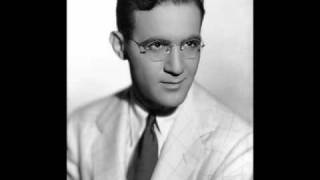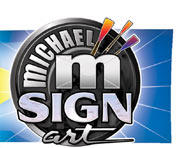| You are not logged in. | login to customize your own personal play list |
“Sing, Sing, Sing” by Benny Goodman |
| United States Federal Trade Commission forbids anyone under 13 from viewing these music videos! |
| You are not logged in. | login to customize your own personal play list |
“Sing, Sing, Sing” by Benny Goodman |
| United States Federal Trade Commission forbids anyone under 13 from viewing these music videos! |
 |
 |
 |
 |
You need Flash player 8+ and JavaScript enabled to view this video.
|
 |
 |
   |
 |

song info “Sing, Sing, Sing” by Benny Goodman is a jazz song. Song Title: Sing, Sing, Sing (With a Swing)Artist: Benny Goodman Genre: jazz Composer: Copyright © 1936 Luigi (Louis) Prima Guitar: Allan Reuss Piano: Jess Stacy Bass: Harry Goodman Drums: Gene Krupa Tenor saxophone: Art Rollini and Vido Musso Alto saxophone: Hymie Schertzer and George Koenig Clarinet: Benny Goodman Trumpet: Harry James, Ziggy Elman, and Chris Griffin Trombone: Red Ballard and Murray McEachern Recorded: 1937 Hollywood, California Released: 6 July 1937 Number of listens: 9070 Current rank: 2081 (updated weekly) Highest rank: 1860 (play the video all the way through to register a vote for this song) Translations courtesy of Apple and Google. |
||
Summary quotation from Wikipedia:
“Sing, Sing, Sing (With a Swing)” is a 1936 song written and composed by Luigi (Louis) Prima, who first recorded it with the New Orleans Gang and released it in March 1936 as a 78, Brunswick 7628, with “It’s Been So Long” as the B side. It is strongly identified with the Big Band and Swing eras. Though it has lyrics, which Prima wrote, it was covered as an instrumental by Fletcher Henderson and, most famously, by Benny Goodman.
Benny Goodman recording
On July 6, 1937, “Sing, Sing, Sing” was recorded in Hollywood with Benny Goodman on clarinet; Harry James, Ziggy Elman, and Chris Griffin on trumpets; Red Ballard and Murray McEachern on trombones; Hymie Schertzer and George Koenig on alto saxophones; Art Rollini and Vido Musso on tenor saxophone; Jess Stacy on piano; Allan Reuss on guitar; Harry Goodman on bass; and Gene Krupa on drums. The song was arranged by Jimmy Mundy. Unlike most big band arrangements of that era, limited in length to three minutes so that they could be recorded on one side of a standard 10-inch 78-rpm record, the version which Goodman’s band recorded was an extended work. The 1937 recording lasted 8 min 43 seconds, and it took up both sides of a 12-inch 78. At its longest, a live recording (with impromptu solos) was recorded and took 12 min 30 sec. Mundy’s arrangement incorporated “Christopher Columbus,” a piece written by Chu Berry for the Fletcher Henderson band, as well as Prima’s work.
In their 1966 book Hear Me Talkin’ To Ya: The Story Of Jazz As Told By The Men Who Made It, music critics Nat Shapiro and Nat Hentoff quote Goodman as saying, “‘Sing, Sing, Sing’ (which we started doing back at the Palomar on our second trip there in 1936) was a big thing, and no one-nighter was complete without it.” Goodman’s 1938 Carnegie Hall jazz concert was different from the commercial release and from subsequent performances with the Goodman band. The personnel of the Goodman band for the Carnegie Hall concert were the same as in the 1937 recording session, except Vernon Brown replaced Murray McEachern on trombone, and Babe Russin replaced Vido Musso on tenor sax.
Goodman’s solo is more introspective in the Carnegie performance, with a wider range of dynamics and colors, with Krupa playing a pulsating tom-tom accompaniment accented on the third beat of the measure behind BG for the first half of the solo, while Jess Stacy inserts minor-chord punctuations. Goodman’s solo evolves to a driving ‘four’ feel before quietly giving way to Stacy’s famous solo, a four-chorus, chromatic impressionistic masterpiece widely analyzed by pianists both jazz and classical. Stacy was quoted as saying he was glad he did not know Goodman was going to let him solo, because then he would have gotten nervous and “screwed it up.”
—from Wikipedia (the Wikipedia:Text of Creative Commons Attribution-ShareAlike 3.0 Unported License applies to Wikipedia’s block of text and possible accompanying picture, along with any alterations, transformations, and/or building upon Wikipedia’s original text that ThisSideofSanity.com applied to this block of text)
The Americans with Disabilities Act (ADA) and U.S. Government Section 508 of the Rehabilitation Act of 1973 require that web sites provide transcripts of audio for the deaf.
We will be adding lyrics to all songs as fast as we can. Please be patient.
Jakub: Sing, Sing, Sing is Fynn’s favorite song.
To submit a comment, use the form below:
Please use the form (with the delay for a human to inspect it) because this website is attacked by more than 20 spam attempts per minute. The only way to keep you safe from the spam is by having human review.
 |
  |
|
If you spot an error in fact, grammar, syntax, or spelling, or a broken link, or have additional information, commentary, or constructive criticism, please contact us.
Copyright © 2014 Milo. All rights reserved. Todos Derechos Reservados. The copyrights on all source code and the data base belong to Milo and are used on this web site by permission.
The source code is at OSdata.com, released under Apache License 2.0.
Copyright 2012, 2013, 2014 Milo
Licensed under the Apache License, Version 2.0 (the “License”); you may not use this file except in compliance with the License. You may obtain a copy of the License at:
http://www.apache.org/licenses/LICENSE-2.0
Unless required by applicable law or agreed to in writing, software distributed under the License is distributed on an “AS IS” BASIS, WITHOUT WARRANTIES OR CONDITIONS OF ANY KIND, either express or implied. See the License for the specific language governing permissions and limitations under the License.
Enjoy the This Side of Sanity website Twitter feed.
Enjoy the This Side of Sanity Twitter feed.

|
player artwork by michaelm